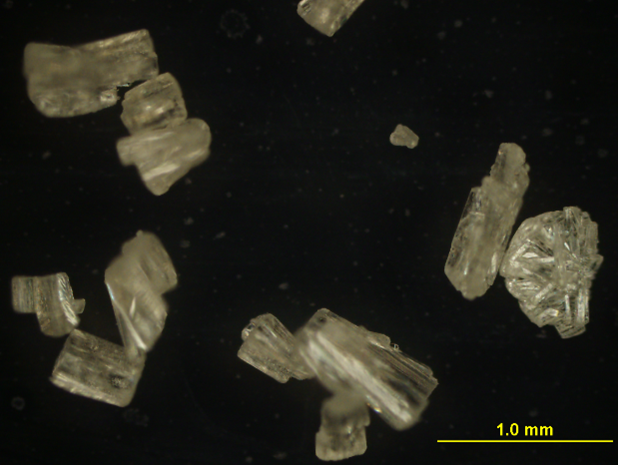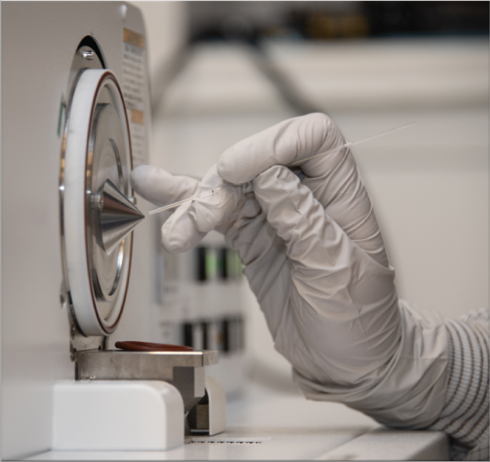SRNL Nonproliferation Group Using Crystals to Streamline MAI Analysis
Scientists at Savannah River National Laboratory (SRNL) help organizations like the International Atomic Energy Agency (IAEA) by researching and developing new monitoring and treaty verification tools to ensure the absence of noncompliance. A mass spectrometer is one device monitoring agencies use to determine a nuclear material’s intended use. The process for this analysis currently takes months, partly because the inspectors cannot bring a large traditional mass spectrometry instrument to a nuclear facility to perform measurement during an inspection.
SRNL researcher KateLyn Smith and her teammates, Abigail Waldron, Elizabeth LaBone, Kyle Samperton, and Principal Investigator (PI) Danielle Mannion, intend to reduce that timeline by creating a new Matrix-Assisted Ionization (MAI) mass spectrometer process using 3-nitrobenzonitrile (3-NBN) crystals instead of the larger, more traditional ionization attachment. By using crystals instead of the large accessory to convert nuclear molecules into ions, the SRNL researchers can utilize a smaller, portable MAI mass spectrometer that nonproliferation experts can use on-site. This technological advancement could shorten the analysis process for nonproliferation agencies.

3-NBN crystals being grown as seen through a light microscope.
Smith and her team are performing first-of-its-kind research as they correlate crystal size to effective ionization for MAI mass spectrometry. It took months of sorting recrystallized 3-NBN into groups based on size, and testing those various sizes to determine which best ionized a sample. In October, the team discovered the crystal size that creates the most ions and are in the process of publishing their results. It’s the most recent accomplishment in a project that started as a Laboratory Directed Research Development (LDRD) effort in 2018.
The next step for the team is demonstrating MAI mass spectrometry measurement on a real-world sample. The team is collaborating with researchers at Pacific Northwest National Laboratory to do that within the next few months. Anticipated follow-on work will pair the ionization method with a miniature mass spectrometer.
This effort is leading to a better nonproliferation tool that allows monitoring agencies to rapidly identify noncompliance and respond faster.

Researcher placing a uranium sample into a mass spectrometer for Matrix-Assisted Ionization analysis.